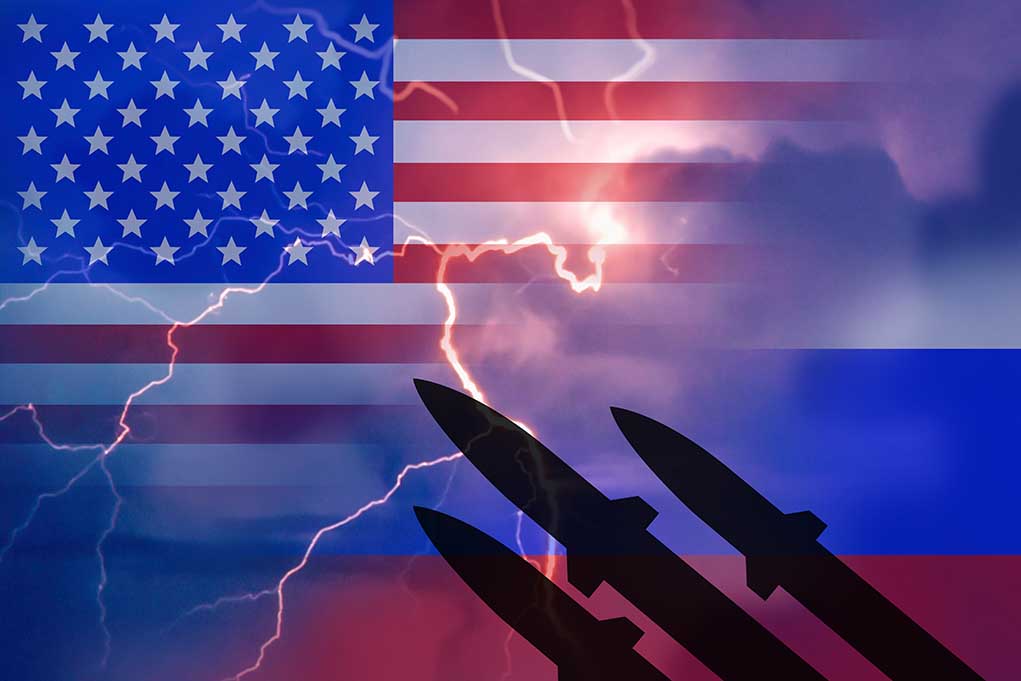
The United States flexes its military muscle with a strategic Minuteman III missile test as Russia dramatically cancels its own ICBM launch scheduled during a Trump-Putin call, signaling escalating nuclear posturing between global powers.
Key Takeaways
- The U.S. successfully conducted its second unarmed Minuteman III ICBM test of the year, traveling 4,200 miles from California to the Marshall Islands
- America maintains a formidable nuclear arsenal of 3,748 warheads, including 400 silo-based Minuteman III ICBMs across five states
- Russia canceled a planned RS-24 Yars ICBM test that was suspiciously timed to coincide with a scheduled call between President Trump and President Putin
- The U.S. followed proper international protocols by notifying Russia in advance of its missile test, while China continues to refuse to join such notification agreements
- Both nations are modernizing their nuclear arsenals, with the U.S. developing the Sentinel to replace aging Minuteman systems
America Demonstrates Nuclear Readiness
The United States Air Force Global Strike Command recently launched an unarmed Minuteman III intercontinental ballistic missile from Vandenberg Space Force Base in California. This test, the second of its kind this year, saw the missile travel approximately 4,200 miles to a test site in the Marshall Islands. The launch represents a clear demonstration of America’s operational nuclear capability during a time of heightened tensions with both Russia and China. Unlike some provocative gestures from other nuclear powers, this test followed proper international protocols, with the U.S. providing advance notification to Russia by bilateral obligations and the international Hague Code of Conduct.
“This test launch is part of routine and periodic activities designed to demonstrate that the United States’ nuclear deterrent remains safe, secure, reliable, and effective in deterring 21st-century threats and reassuring our allies,” Organized by U.S. Air Force Global Strike Command.
This missile test occurs amid growing concerns about both Russian and Chinese nuclear modernization efforts. While officials emphasized that the launch was not a direct response to current world events, the timing speaks volumes. The test marks the continuation of a program that has conducted over 300 similar tests throughout its history, underscoring America’s commitment to maintaining a reliable nuclear deterrent capability that forms a cornerstone of our national security posture. The U.S. currently maintains 400 Minuteman III ICBMs in silos across five states, each equipped with a single warhead.
Russia’s Nuclear Posturing During Trump-Putin Diplomacy
In a notable development, Ukraine’s Main Intelligence Directorate revealed that Russia had planned to launch an RS-24 Yars ICBM from Sverdlovsk Oblast on May 19, 2025, suspiciously timed to coincide with a scheduled call between President Trump and Russian President Vladimir Putin. The launch was later canceled, but the intent behind such provocative timing raised serious concerns about Russia’s nuclear messaging. The planned launch deviated from Russia’s typical practice of using the Plesetsk Cosmodrome for ICBM tests, suggesting a deliberate strategic signal aimed at influencing diplomatic discussions.
“According to the Russian Ministry of Defense, the Yars is designed to penetrate ‘any existing or future missile defense systems.”
The RS-24 Yars ICBM represents a significant threat with its impressive 11,000 km range and capacity to carry up to four nuclear warheads. Mounted on a mobile platform for enhanced survivability, the system is specifically designed to evade missile defense systems. Ukrainian intelligence sources interpreted the planned launch as a pressure tactic against Ukraine, the European Union, and NATO. Russia has periodically showcased its nuclear capabilities since it invaded Ukraine in 2022, using what many analysts describe as “nuclear blackmail” to achieve diplomatic leverage.
The Nuclear Triad and Global Security Balance
The United States maintains its nuclear deterrence through a three-pronged strategy known as the nuclear triad, which includes land-based ICBMs, submarine-launched ballistic missiles, and strategic bombers. This diversified approach ensures that no single attack could eliminate America’s ability to respond with overwhelming force. With 3,748 nuclear warheads as of 2023, the United States maintains a credible deterrent against potential adversaries. The ongoing missile tests serve as a visible reminder of American readiness and resolve in the face of increasing global nuclear threats.
“This ICBM test launch underscores the strength of the nation’s nuclear deterrent and the readiness of the ICBM leg of the triad…This powerful safeguard is maintained by dedicated Airmen – missileers, defenders, helicopter operators, and the teams who support them – who ensure the security of the nation and its allies,” said General Thomas Bussiere.
Both the United States and Russia are actively modernizing their nuclear arsenals. The U.S. is developing the Sentinel system to replace the aging Minuteman III fleet, while Russia continues to rely on the Yars despite delays in deploying newer systems like the RS-28 Sarmat ICBM. The Bulletin of the Atomic Scientists estimates Russia’s nuclear arsenal at 4,309 warheads, slightly larger than America’s stockpile. China’s nuclear expansion also continues at a concerning pace, with the country conducting its own ICBM test last September while refusing to join international notification protocols, raising transparency concerns about Beijing’s strategic intentions.

















